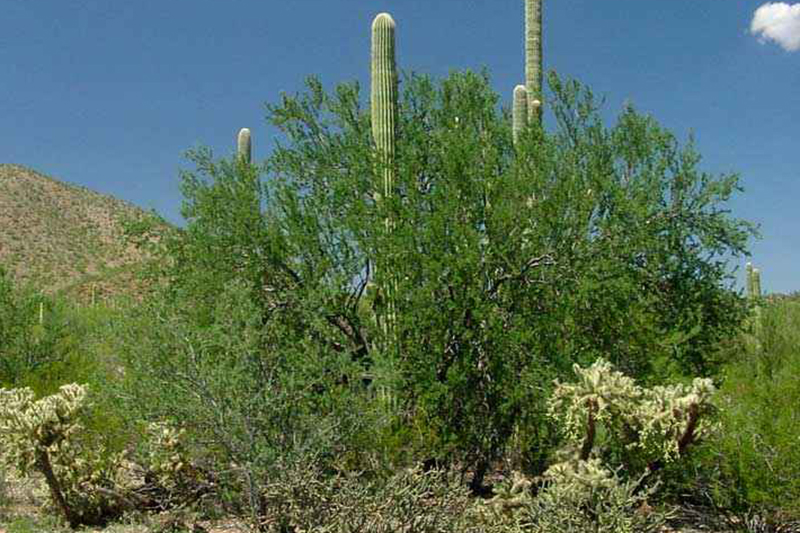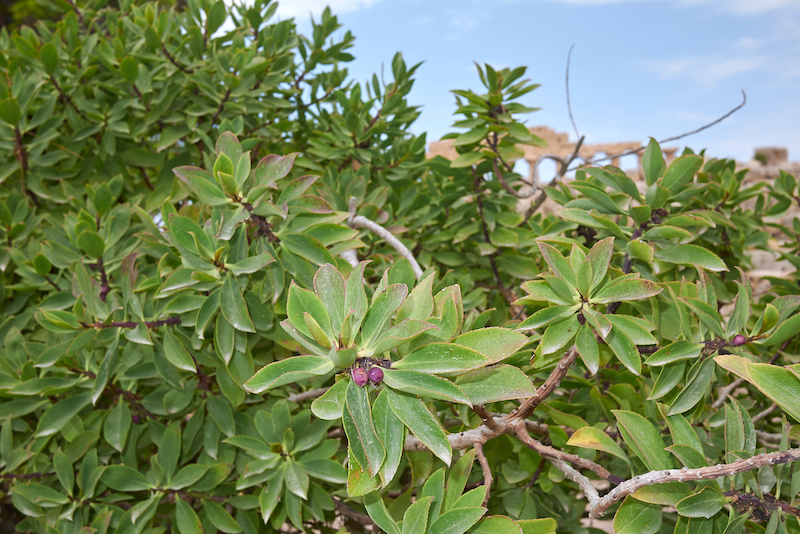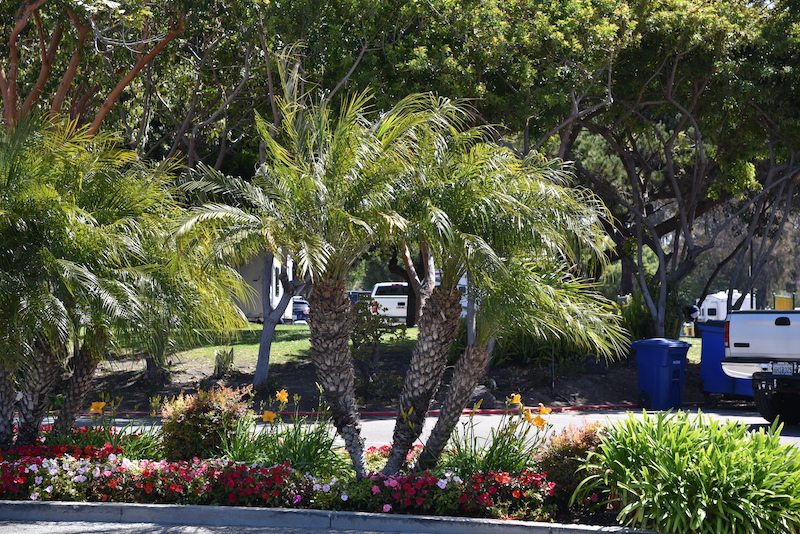benefits of mature trees
Over 1,100 Trees Live at Campland
The Benefits of Mature Trees
Campland on the Bay® planted over 1,160 trees in the early 1970’s. These 36 varieties of mature trees benefit the environment by:
- Supporting wildlife by supplying habitat for birds, insects, and wildlife.
- Providing oxygen and taking in carbon dioxide through the process of photosynthesis
- Absorbing massive amounts of carbon. 100 trees remove 53 tons of carbon dioxide and 430 pounds of other air pollutants per year.[1]
- Helping to control climate by moderating the effects of the sun, rain, and wind.[2]
- Enhancing the aesthetics and providing shade of our resort.
- Preserving and enhancing soil.
- Producing fruits and nuts.
Trees matter to the nation’s greenhouse gas balance sheet and expanding the reserve could be a cost-effective way to help decarbonize the economy.[3]
[1] United States Department of Agriculture – “Benefits of Trees”
[2] SaveATree.com – “Why Trees?”
[3] Resources.org – “Tree Planting, Land Use, and Forest Climate Benefits by David N. Wear”
Facts About Trees for Kids Video
Importance of Trees Video
Trees are Life-Saving Infastructure
According to American Forests.org
Trees Lower Utilities Bills
According to American Forests.org
Trees Provide Employment
According to American Forests.org
Learn About the Trees of Campland

Aleppo Pine Tree
Pinus halepensis
Native to the Mediterranean
Bark is orange-red, thick and deeply fisured at the trunk. Pine cones are narrow and 2 - 4.7 inches long. It can grow up to 82 ft. tall.

Brisbane Box Tree
Lophostemon confertus
Native to Australia
Evergreen tree grows up to 60 ft. Good shade tree as grows wide canopy with dome like shape. Dense foliage with dark green leathery leaves. Rarely sheds limbs. Photo credit David Gress.

Bottlebrush Tree
Callistemon citrinus
Native to New South Wales, Australia
Known for its showy red flower spikes (looks like it could be used use to clean a bottle). This shrub grows up to 20 ft. tall. Leaves smell lemony when crushed.

Camphor
Cinnamonum camphora
Native to South China, Taiwan, South Japan
Evergreen tree grows up to 98 ft. Leaves have a glossy, waxy appearance and smell of camphor when crushed. Camphor is used as incense and as a medicine, and insect repellant.

Canary Island Pine
Cupaniopsis anacardioides
Native to Australia, Papau New Guinea
Grows up to 40 ft. tall. Drops marble-sized orange fruit. Bark is light gray, rough. Tree has rounded shape. Grows 12 - 24 inches per year. Lives up to 150 years.

Carrotwood
Lophostemon confertus
Native to Australia
Evergreen tree grows up to 60 ft. Good shade tree as grows wide canopy with dome like shape. Dense foliage with dark green leatherly leaves. Rarely sheds limbs.

Deodar Cedar
Pyrus kawakamii
Native to Taiwan, China
Has showy white flowers. Bark is dark brown or light green, blocky or furrowed. Leaves are elliptic to ovate. Grows up to 30 feet. Rate of growth 24 - 36 inches per year.

Evergreen Pear
Cinnamonum camphora
Native to South China, Taiwan, South Japan
Evergreen tree grows up to 98 ft. Leaves have a glossy, waxy appearance and smell of camphor when crushed. Camphor is used as incense and as a medicine, and insect repellant.

Incense Cedar
Calocedrus decurrens
Native to Eastern Asia & Western North America
This tree grows 70 - 90 feet tall. Lives up to 150 years. Has scalelike evergreen leaves. Drops small to medium sized red or brown cones. Bark is brown, fibrous and furrowed.

Indian Laurel Fig/Chinese Banyan
Ficus Microcarpa
Member of the fig tree family, it is widely planted as a shade tree. Used in traditional medicine. In Japan, the bark, aerial roots, and dried leaves are used against pain and fever. In China, it is used for the flu, malaria,
bronchitis, and rheumatism. It is an antioxidant, has antibacterial, anti-carcinogen and anti-diabetic agents.

Ironwood
Olneya tesota
Native to U.S./Mexico borderlands
This woody legume is found in washes and hillside drainages in the Sonoran Desert. It is one of the most ecologically important plants as it is a "nurse plant" that benefits flora and fauna. (Photo credit: Image by Mark Dimmitt.)

Jacaranda
Jacaranda mimosifolia
Native to Tropical Americas
Known for their fragrant purple flowers in the spring and summer. Name is South American origin, meaning fragrant. The wood has been used in dying and in medicine.

Japanese Black Pine
Ficus Microcarpa
Member of the fig tree family, it is widely planted as a shade tree. Used in traditional medicine. In Japan, the bark, aerial roots, and dried leaves are used against pain and fever. In China, it is used for the flu, malaria,
bronchitis, and rheumatism. It is an antioxidant, has antibacterial, anti-carcinogen and anti-diabetic agents.

Kaffir Boom Coral
Erythrina caffra
Native to South Africa
Known as the “flame tree” it produces large showy orange or red flowers that are thorny. Seeds are poisonous. Grows up to 40 feet. Provides nice canopy of shade. Known as the tree of Los Angeles.

Lemon Scented Gum Tree
Corymbia citriodora
Native to Australia
Light green leaves when crushed smell of cit-ronella and lemon. Oil distilled from the leaves is used in purfume and as a misquito repellant. Smooth trunk varies in color from white to coppery pink to pale yellow. Grows up to 160 ft. tall. Rate of growth up to 36+ inches per year.

Metrosideros Excelsa
aka pōhutukawa
Native to New Zealand
Known as the New Zealand Christmas tree, this evergreen tree produces a brilliant display of red flowers, each consisting of a mass of stamens. It grows up to 82 feet tall, spreading in a dome-like form.

Mexican Fan Palm
Mexican washingtonia
Native to Western Sonora & Baja California, Mexico
This ornamental palm can live up to 150 years. The palms are shaped like fans.The leaves have been used for rooofs, baskets and sandals while the fiber was used in making cord. Grows up to 100 ft. tall.

Myoporum
Myoporum
Native to New Zealand
This fast growing shrub is unique because it has transparent dots in the leaves which are visible when held to a light. Also known as ngaio, this small tree grows up to 30 feet tall.

Norfolk Island Pine
aka pōhutukawa
Native to New Zealand, Southern Australia
A species of conifer, this tree was first sighted by Captain James Hook in 1774 in the South Pacific. The straight trees wood was suitable for masts and yards for sailing ships. A slow growing tree, it reaches heights up to 210 feet.

Pomegranate Tree
Punica granatum
Native to the Mediterranean Region
This fruit-bearing deciduous shrub grows between 16 - 33 feet tall. Pomegranates are used in baking, cooking, juice blends, meal garnishes, smoothies, and alcoholic beverages, such as cocktails and wine.

Punk Tree
Melaleuca quinquenervia
Native to New Caledonia, Papua New Guinea & E. Australia
AKA Broad Leaf Paperbark. Leaves used as a medicinal tea. The paper-like bark was used traditionally for making coolamons, shelter, wrapping baked food and lining ground ovens. Nectar can be used as a beverage. Timber used for fences. Has showy pink, purple or yellow flowers. Attracts birds and bees.

Pygmy Date Palm
Phoenix roebelinii
Native to Southeast Asia
Small, multi-trunked palm that branches from base and grow up to 25’. This popular ornamental plant is effective at removing common household air toxins formaldehyde and bezene.

Red Ironbark Eucalyptus
Eucalyptus sideroxylon
Native to Eastern Australia
Grows up to 90 ft. tall. Rate of growth 36 inches
or more. Leaves are bluish green or silver or gray green. Flowers are pink, red or rose colored. Bark is black or red brown, blocky, or furrowed.

Rusty Leaf Fig
Ficus rubiginosa
Native to Eastern Australia
It’s a strangling fig that begins life as a seedling
that grows on other plants. Bark is dark to light
gray, rough our smooth. Bears small yellow or mostly green fruit. Grows up to 50 ft. tall.

Sago Palm
Phoenix roebelinii
Native to Japan
This slow growing palm is a popular plant for landscapes. The pith contains edible starch, and is used for making sago. It must be washed of toxins before used.

Scrub Pine
Pinus virginiana
Native to U.S. from Southern New York to Western Tennessee and Alabama
Grows on poor soils to size up to 59 feet. Some trees have twisted trunks. Pine has short yellow-green needles that are also twisted.

Shamel Ash
Fraxinus uhdei
Native to Mexico and Central America
In the 1920s, Archies Shamel introduced the trees to California. This tree is fire resistant. Often planted along streets. Has a rounded shape and grows up to 80 feet. Lives 50 to 150 years.

Shiny Xyosma
Grevillea Robusta
Native to Eastern Australia
Fast-growing evergreen with a single main trunk. Bark is dark grey and furrowed. Leaves are fern-like. The strong wood is resistant to wood rot so used for furniture, cabinets and fences.

Silky Oak
Eucalyptus sideroxylon
Native to Eastern Australia
Grows up to 90 ft. tall. Rate of growth 36 inches
or more. Leaves are bluish green or silver or gray green. Flowers are pink, red or rose colored. Bark is black or red brown, blocky, or furrowed.

Southern Magnolia
Magnolia Grandiflora
Native to Southern U.S.
Medium to large evergreen with a single main trunk. Known for its showy large lemon-cintronella scented white flowers. This tree has a long history in the Southern US.

Stone Pine
Grevillea Robusta
Native to Eastern Australia
Fast-growing evergreen with a single main trunk. Bark is dark grey and furrowed. Leaves are fern-like. The strong wood is resistant to wood rot so used for furniture, cabinets and fences.

Torrey Pine
Eucalyptus sideroxylon
Native to Eastern Australia
Grows up to 90 ft. tall. Rate of growth 36 inches
or more. Leaves are bluish green or silver or gray green. Flowers are pink, red or rose colored. Bark is black or red brown, blocky, or furrowed.

Travelers' Palm
Ravenala
Native to Madagascar.
It's called the Travelers’ palm because the sheaths of the stems hold rainwater. The huge paddle-shaped leaves grow in a distinct fan shape aligned in a single plane. They produce large white flowers.

Weeping Chinese Banyon
Ficus microcarpa
Native to China, tropical Asia and Austalia
Planted as a shade tree, it is from the fig tree family. The largest tree known is 110 feet tall, has a 250 ft. crown spread, with over 1,000 aerial trunks coming down.

White Mulberry Tree
Morus alba
Native to China, Korea, Japan
Mulberries are fast-growing when young and can grow up to 80 ft. tall. The leaves are alternately arranged, simple, and often lobed and serrated. In folk medicine, the berries were used to treat ring worm.

